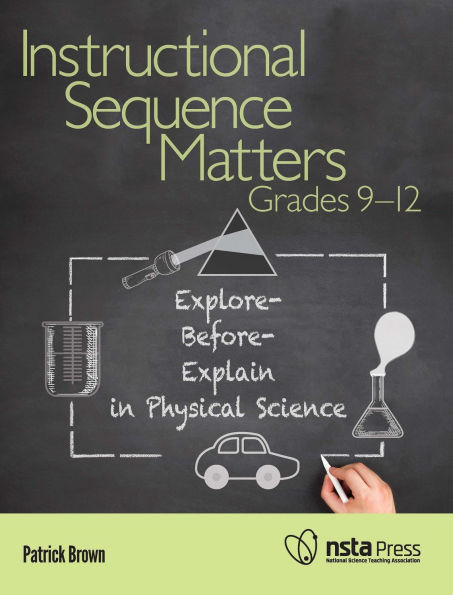Instructional Sequence Matters, Grades 9-12: Explore-Before-Explain in Physical Science
Instructional Sequence Matters, Grades 9–12 is the one-stop resource that will inspire you to reimagine your approach to high school physical science. The book discusses the 5E (Engage, Explore, Explain, Elaborate, and Evaluate) as a specific pathway for teaching and learning. It also shows how simple shifts in the way you arrange and combine activities will help your students construct firsthand knowledge as you put the three dimensions of contemporary standards into practice. Like its popular counterparts for grades 3–5 and 6–8, the book is designed as a complete self-guided tour. It helps both novice teachers and classroom veterans understand the following: • Why sequence matters. A concise review of cognitive science and science education research explains why the order in which you structure your lessons is so critical. • What you need to do. An overview of important planning considerations covers becoming an “explore-before-explain” teacher and designing 5E instructional models. • How to do it. Planning templates include reflection questions to spark your thinking and develop your knowledge. Model lessons encourage you to teach in ways that allow for active meaning making—precisely what is called for in three-dimensional instruction. You’ll learn to engage students as they tackle engineering design problems, use algebraic and mathematical reasoning, read technical texts, develop their own inquiries, and write argumentative essays. Instructional Sequence Matters, Grades 9–12 will help you stimulate teacher thinking and cultivate the skills necessary to take your students to higher levels of learning.
1143166085
Instructional Sequence Matters, Grades 9-12: Explore-Before-Explain in Physical Science
Instructional Sequence Matters, Grades 9–12 is the one-stop resource that will inspire you to reimagine your approach to high school physical science. The book discusses the 5E (Engage, Explore, Explain, Elaborate, and Evaluate) as a specific pathway for teaching and learning. It also shows how simple shifts in the way you arrange and combine activities will help your students construct firsthand knowledge as you put the three dimensions of contemporary standards into practice. Like its popular counterparts for grades 3–5 and 6–8, the book is designed as a complete self-guided tour. It helps both novice teachers and classroom veterans understand the following: • Why sequence matters. A concise review of cognitive science and science education research explains why the order in which you structure your lessons is so critical. • What you need to do. An overview of important planning considerations covers becoming an “explore-before-explain” teacher and designing 5E instructional models. • How to do it. Planning templates include reflection questions to spark your thinking and develop your knowledge. Model lessons encourage you to teach in ways that allow for active meaning making—precisely what is called for in three-dimensional instruction. You’ll learn to engage students as they tackle engineering design problems, use algebraic and mathematical reasoning, read technical texts, develop their own inquiries, and write argumentative essays. Instructional Sequence Matters, Grades 9–12 will help you stimulate teacher thinking and cultivate the skills necessary to take your students to higher levels of learning.
44.99
In Stock
5
1

Instructional Sequence Matters, Grades 9-12: Explore-Before-Explain in Physical Science
168
Instructional Sequence Matters, Grades 9-12: Explore-Before-Explain in Physical Science
168Paperback
$44.99
44.99
In Stock

Product Details
| ISBN-13: | 9781681408446 |
|---|---|
| Publisher: | NSTA - National Science Teaching Association |
| Publication date: | 04/30/2021 |
| Series: | Instructional Sequence Matters |
| Pages: | 168 |
| Product dimensions: | 11.00(w) x 8.50(h) x 0.50(d) |
| Age Range: | 14 - 17 Years |
About the Author
From the B&N Reads Blog
